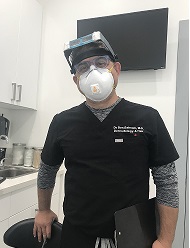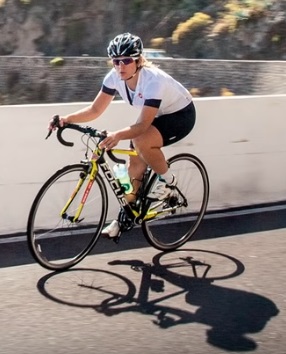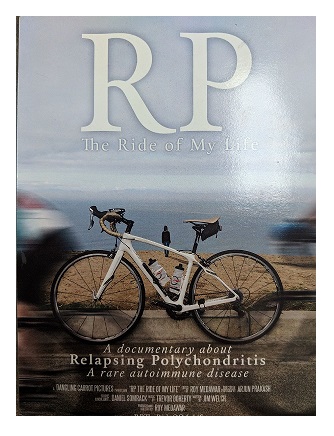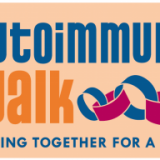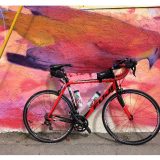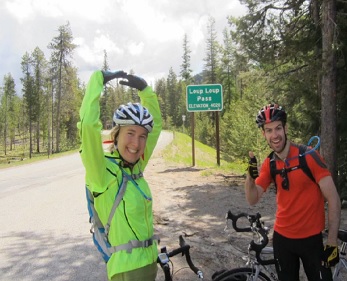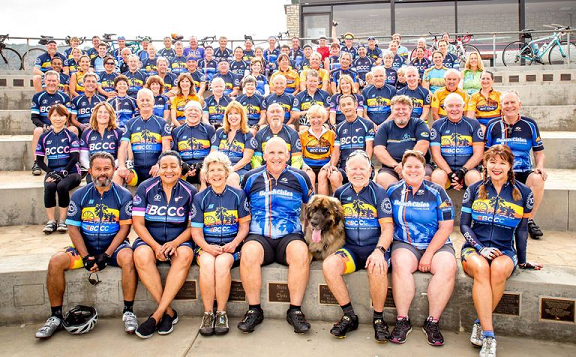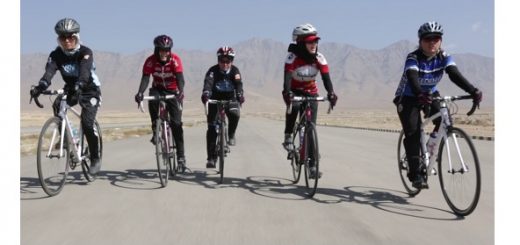Facts to Save Your Own Skin
 What do you know about skin cancer?
What do you know about skin cancer?
The expression “save your own skin,” or “save your own hide” is meant as a warning to protect yourself from something dangerous or unpleasant. The skin is the largest organ of the human body. Did you know that cancer of the skin is the most common of cancers? Skin cancer types include; Basal Cell, Squamous Cell, Melanoma, Merkel Cell, Lymphoma and Kaposi Sarcoma. Skin cancer can occur year round. Don’t think that because it’s no longer summer or because it’s a cloudy day, raining or you’re snow skiing that your skin is safe from damaging ultraviolet (UV) rays.
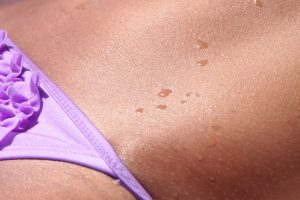 Important Facts
Important Facts
Basal and Squamous Cell are the most common and most treatable of skin cancers and while risk factors alone do not ensure your contracting them, it’s important to know what these risk factors are. The American Cancer Society reports that 3.3 million Americans annually or 8 out of 10 cases are diagnosed as Basal Cell which starts mostly on the face, head or neck, typically areas of the body most exposed to the sun. Left untreated Basal Cell can grow into nearby areas and invade the bone or other tissues beneath the skin. If not entirely removed they can regrow.
What does Basal Cell carcinoma look like?
Self examination is important to watch for any changes in coloration of your skin. Don’t forget to ask your doctor to examine you as well for any signs of skin cancer. Your doctor can often recognize skin cancer or refer you to a dermatologist if necessary for diagnosis or further treatment. Do you have any of the following symptoms? Flat, firm, pale or yellow areas, similar to a scar? Raised reddish patches that might be itchy? Small, pink or red, translucent, shiny, pearly bumps, which might have blue, brown, or black areas? Pink growths with raised edges and a lower area in their center, which might contain abnormal blood vessels spreading out like the spokes of a tire? Open sores (which may have oozing or crusted areas) that don’t heal, or that heal and then come back? Do you have a cut from shaving that simply won’t heal in one weeks time? Basal Cell carcinomas are considered “fragile” and are prone to bleed after shaving or minor injury. These are all symptoms of Basal Cell carcinoma. They are the most common type of skin cancer and should be treated as soon as possible.
What does Squamous Cell carcinoma look like?
Two out of ten cases of skin cancer are diagnosed as Squamous Cell carcinoma and can be found on sun exposed areas, e.g., face, ears, neck, lips, and backs of the hands. They can also develop in scars or chronic skin sores elsewhere. Less commonly found to form on the skin of the genitals. Do you have any of the following – Rough or scaly red patches, which might crust or bleed? Raised growths or lumps, sometimes with a lower area in the center? Open sores (which may have oozing or crusted areas) that don’t heal or that heal then come back? Do you have any wart-like growths? Click her to View a gallery of images of skin cancer.
What are the risk factors for the two most common skin cancers?
Risk factors for the two most common skin cancers include; excess UV light/sun exposure particularly sun burns (major risk), anyone with light colored skin who freckles easily (high risk), smoking (squamous cell – especially on the lips), being male, (believed due to greater sun exposure), the elderly, large quantities of arsenic exposure (naturally found in well water), psoriasis patients given psoralens and ultraviolet light (PUVA) treatments, those who have the rare skin disorder known as Xeroderma pigmentosum (XP), those with weakened immune systems (squamous cell), those with Human papilloma virus (HPV), those with a rare congenital condition known as Basil cell nevus syndrome (nevoide basal cell carcinoma) or Gorlin syndrome, and those with a family history of skin cancer.
We’re told by the American Cancer Society that we can’t know the precise number of people diagnosed with Basal or Squamous Cell because these are the only cancers not tracked or reported to cancer registries. With this in mind the American Cancer Society estimates 5.4 million cases are diagnosed annually. An estimated 2,000 Americans die annually while the majority of these are elderly who do not visit their doctor until the growth is too large. Others diagnosed include those with suppressed immune systems, e.g., from certain diseases or medical treatments such as organ transplant recipients.
What to do to reduce your risk?
 The days of rubbing baby oil onto your skin while chanting “burn baby burn” are gone! We know all too well now that sunburn damages our skin. Reducing risk for Basal Cell carcinoma includes limiting exposure to UV light/ sun exposure, especially if you have light colored skin, freckle and burn easily. Avoid tanning beds. Be kind to your skin – use sunscreen daily – rain or shine. Also, keep in mind that dermatologists say that most people fail to reapply their sunscreen leaving their skin at risk. Applying once a day is not enough. Apply before, during or after swimming, while perspiring and or during extended periods of time outdoors. Wear clothing that is UPF rated (Ultraviolet Protection Factor) to help protect your skin from UVR – “ultraviolet rays”. All fabrics are not created equal. Yes you can get a sunburn under your clothes. For added protection look for UPF rated clothing and choose a UPF rating of 30 or higher meaning 1/30th of ultraviolet rays are reaching your skin. Wet garments cause a fabrics weave to create larger gaps allowing more UVR to reach your skin which means your skin will burn faster. Wear wide brimmed hats of 3″ or more, preferably UPF rated materials or heavy canvas. Don’t forget to protect your eyes too! UVR can cause eye disease and cataracts. Choose large frames and lenses with UAV/UVB offering 100% protection.
The days of rubbing baby oil onto your skin while chanting “burn baby burn” are gone! We know all too well now that sunburn damages our skin. Reducing risk for Basal Cell carcinoma includes limiting exposure to UV light/ sun exposure, especially if you have light colored skin, freckle and burn easily. Avoid tanning beds. Be kind to your skin – use sunscreen daily – rain or shine. Also, keep in mind that dermatologists say that most people fail to reapply their sunscreen leaving their skin at risk. Applying once a day is not enough. Apply before, during or after swimming, while perspiring and or during extended periods of time outdoors. Wear clothing that is UPF rated (Ultraviolet Protection Factor) to help protect your skin from UVR – “ultraviolet rays”. All fabrics are not created equal. Yes you can get a sunburn under your clothes. For added protection look for UPF rated clothing and choose a UPF rating of 30 or higher meaning 1/30th of ultraviolet rays are reaching your skin. Wet garments cause a fabrics weave to create larger gaps allowing more UVR to reach your skin which means your skin will burn faster. Wear wide brimmed hats of 3″ or more, preferably UPF rated materials or heavy canvas. Don’t forget to protect your eyes too! UVR can cause eye disease and cataracts. Choose large frames and lenses with UAV/UVB offering 100% protection.
What type of sunscreen is best?
There are numerous sun care products on the market widely ranging in price. The most important thing is to purchase a sunscreen you will apply daily. Let’s face it, if the product is oily or causes you to have a ghostly appearance you simply won’t use it. Ask your dermatologist or physician for a referral to a product that will fit your budget and sun protection needs. According to Dr. Jessica Krant a board-certified dermatologist at the Laser & Skin Surgery Center of NY and assistant clinical professor of dermatology at SUNY Downstate, her “go-to daily SPF is Neutrogena Ultra Sheer Dry Touch SPF 55… I use it instead of moisturizer rather than double layering. I like it because it provides a somewhat matte finish and makes me look like I actually am wearing a light foundation without making me look chalky or pale at all. It doesn’t crumble or pill like some other sunscreens, and has never made me break out.”
Neutrogena is a number one dermatologist recommended sunscreen containing “Helioplex” widely available from about $10 to $15. It has a “lightweight clean feel” just as the product packaging describes. Whatever your choice in sunscreen protect your skin daily, perform self examinations of your bodies largest organ – your skin. If you see any unusual spots or change in size or color of a spot on your skin have it checked right away and save your skin from more extensive damage.
The Women Bicycling Logo is a Registered Trademark

